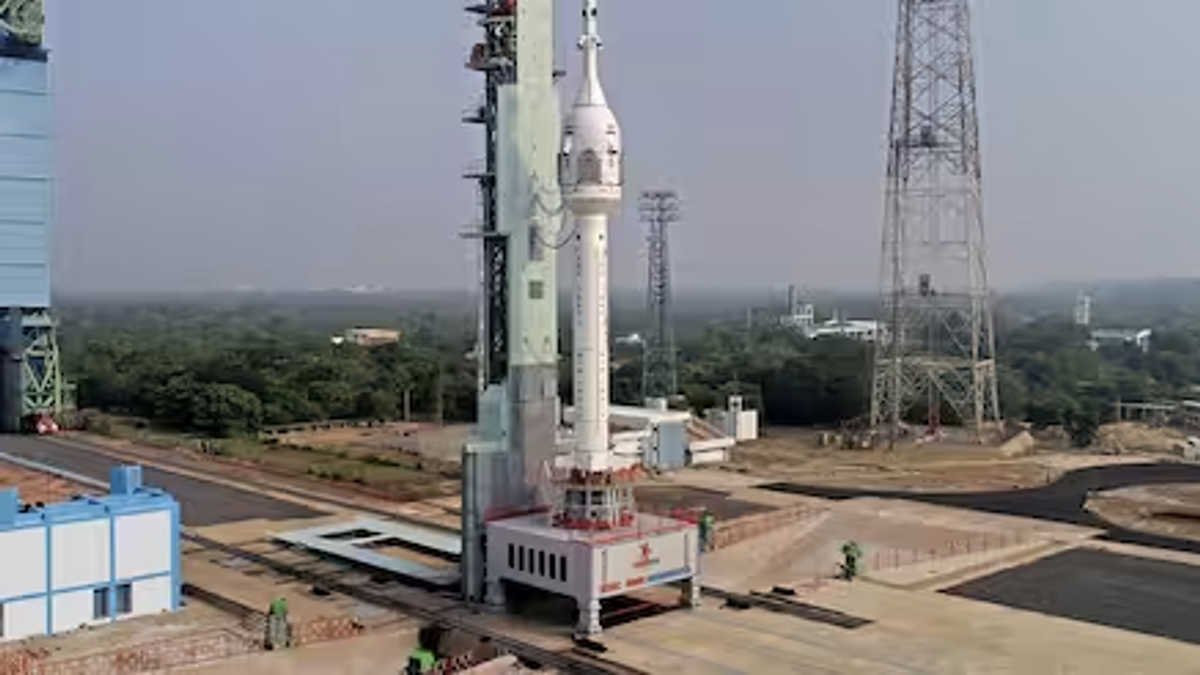
Did ISRO Achieve its Objectives of Gaganyaan CES Test?
The world witnessed an extremely hyped response to ISRO’s Crew Ejection System (CES) test of Gaganyaan Crew Module (CM) on 21 Oct 23. The present-day media of India was hyper vibrant with news and views, some genuine but many ‘not so genuine’ too. From the views rendered by some, both belonging to the govt agencies and others, it was apparent that very few knew what a CES test/trial was all about. None other than the minister in-charge of Science & Technologies commented that this system will enable our astronauts to return safely back from space sojourns, which is not the fact. In normal space flights injecting CM to desired orbit, CES may never come to play.
May the readers appreciate that testing CES Test is one of the requirements for Human rating of the rocket propulsion system. Emergency in the rocket propulsion system may arise any time before the payload is injected into the orbit. There could be situations when the rocket carrying astronauts may extinguish, veer out of control thus necessitating its destruction. Those are the situations when CES comes in play to eject the Crew Module to safety, for it to para-descend to the terrain underneath within the specifies parameters. CES enables CM to detach from the rocket system, enables adequate separation from the rocket’s flight path through its Escape & pitch motors, stabilizing thru’ drogue chutes and decelerating thru’ three main parachutes before touchdown on ground or splash in sea before its recovery by Search & Rescue team. Here come intricacies that deserve to be brought into consideration while drafting the Test Schedule for the CES to effectively test all its objectives.
In accordance with the requirements of the CES mentioned above, the Test Schedule must be drafted to test all essential functions considered crucial for crew safety. This will incorporate jettisoning of the payload, its separation away from the path of the out-of-control rocket system and initiation of the drogue and main parachutes to stabilize and decelerate it effectively for a safe touchdown/splash.
Jettisoning of Payload
The most crucial parameters for jettisoning of the Payload-CM are the followings:-
- Weight of the payload of which CM is a part of. The jettisoning motors must have requisite thrust to eject out the payload for its weight. The design weight of the systems and assemblies to be ejected must be taken into consideration.
- G-Forces imposed at the time of ejection/jettisoning. This is the most crucial factor for the jettisoning motors to be effective as the weight of the payload increases as many time the G-forces imposed during flight. It is believed that the human-rated LVM rocket has a design G-force of 4.5 G max hence, the weight of the payload to be ejected out will be 4.5 times during the emergency.
- Aerodynamic forces applicable on the payload depends upon its velocity and altitude. It is directly proportional to the velocity and inversely proportional to the altitude. This however, is not a major issue.
A glance at the test plan shows glaring inadequacy in the test condition for initiation of the CES. Altitude of jettisoning of the CM was ~17 Km, velocity of ~1.2 Mach BUT… the most important parameter, the G-Forces was left unspecified that should have been the design G parameter for test. In fact, CES was jettisoned when the rocket had already separated after its burn out. In fact, the payload was under deceleration in the absence of the rocket thrust. That means G-forces applicable at the time of jettison was less than 1. In other words, the effective weight of the CM system was less that 4.5 tons thus making the jettisoning easier. This was surely not the aim/objective of the test. Will the same jettisoning motor effect its separation under +4 or +4.5 G when the effective weight of the 4.5 tons CM, be in excess of 18 tons? Will 734 kN of the vacuum thrust of jettisoning motor be sufficient for >18 tons payload ejection? Author is not sure. ISRO may like to draw an analogy or re-schedule this test. This answer must be rendered by the test team to the Certification agencies and those agencies who are concerned with the safety of the crew. On a first glance, it appears that the planners of this test have possibly erred in drafting the Test Schedule to the realities of actual flights and those approving were unaware of the fallacy.
Deployment of Parachutes and Deceleration
There are just couple of considerations for the parachute deployment as to what is the design altitude for its deployment in CES operations at high altitudes? Will the CM-payload descent rate be similar to what was planned in the present test? Possibly not. It is another matter though that the entire flight envelop may not be relevant for test/trials. Payload stabilisation with drogue will take longer duration and the Parachute Opening Shock at higher altitudes may be greater. In-flight deceleration and touch down velocity will depend on the altitude of deployment of the main parachutes. Touchdown velocity on hard ground becomes very crucial for safety while splashdown in sea does further absorb part of the impact forces. Although some analogy could be drawn from the test parameters achieved, analogy remains analogy, not the actuals.
Requirement of Independent Human Space Exploration Certification Agency
It is believed that presently there is no independent certification agency for Human Space Missions beyond administrative control of ISRO in absolute terms. It is notable that Human Space Mission neither comes under Military Airworthiness (CEMILAC) nor under Civil Aviation (DGCA). It is mandatory to ensure neutrality for certification that could also keep an eye on the Quality Assurance agencies. Project Gaganyaan was an excellent platform for Govt of India to create an independent body of Certification for Human Space Explorations whether of ISRO, other Govt agencies or future Space Tourism by private agencies. Surely Indian Govt missed out on this aspect.
Immediate requirement of an independent certification agency is essential. It may become difficult to draft a fool-proof Test schedules for the test/trials of Environmental Control and Life Support Systems (EC & LSS) for Gaganyaan and its certification. Those will be very crucial tests/trials, vital for the crew for their safe physiological functions. It is believed that the designs of the EC&LSS is being done by ISRO themselves for the first time, under a new infrastructure without adequate expertise. The only indigenous Life Support Design & Development (D&D) agency in Aviation DEBEL, DRDO has been kept out of it.
Similarly, drafting training schedule for astronaut is also believed to be in place even though first batch of astronauts have undergone larger parts of their training abroad. Whatever may be the gaps in the D&D or in training schedules etc indigenously, could only be identified and rectified by an independent certification agency. This also includes planning parabolic flight training for exposure to micro-gravity in an indigenously modified aircraft.
Concluding Thoughts
Away from the media hype of the CES test carried out reportedly successfully on 21 Oct 23, there are questions on the rationale of the Test Schedule. It can be expected that ISRO being a highly professional body, will free itself from the tasks of Certification which must be a neutral, unbiased and independent body outside administrative controls of ISRO. It will be in the interest of the nation that Govt of India creates a new Certification body for Indian Human Space Explorations for the present as well as for the future requirements incl Space Tourism.

